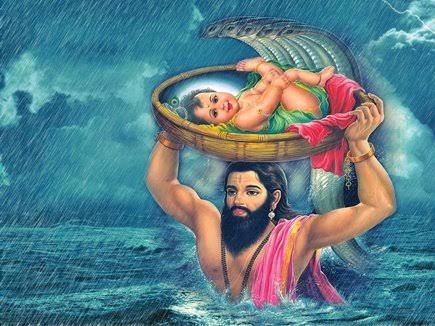
Shri Krishna Janmashtami, one of the most celebrated festivals in India, marks the birth of Lord Krishna, the eighth avatar of Lord Vishnu. This auspicious day falls on the Ashtami (eighth day) of Krishna Paksha in the month of Bhadrapada, according to the Hindu lunar calendar, which typically corresponds to August or September in the Gregorian calendar.
The Legend of Lord Krishna’s Birth



BirthAccording to Hindu mythology, Lord Krishna was born over 5,000 years ago in the city of Mathura, to Queen Devaki and King Vasudeva. His birth took place in the midst of a stormy night, under the watchful eyes of the cruel King Kansa, Devaki’s brother, who had imprisoned her and Vasudeva due to a prophecy that her eighth son would be the cause of his death.Miraculously, when Krishna was born, the prison gates opened, and the guards fell asleep. Vasudeva, taking advantage of this divine intervention, carried the newborn Krishna across the Yamuna River to the safety of Gokul, where he was raised by Nanda and Yashoda.
Significance of Janmashtami
Janmashtami holds great significance in Hinduism as it symbolizes the victory of good over evil. Lord Krishna is revered as the supreme being, a savior who descended to earth to rid the world of sin and injustice. His teachings, particularly those in the Bhagavad Gita, continue to inspire millions worldwide.
Celebrations Across India
The festival of Janmashtami is celebrated with immense devotion and enthusiasm across India. The day is marked by fasting, singing devotional songs, visiting temples, and reenacting episodes from Krishna’s childhood.
Dahi Handi: One of the most popular traditions associated with Janmashtami is Dahi Handi, particularly in Maharashtra. Groups of young men, known as Govindas, form human pyramids to break a pot of curd (dahi) suspended high above the ground, symbolizing the playful and mischievous nature of young Krishna.

Raslila: In the northern states, especially in Vrindavan and Mathura, Raslila performances are a major highlight. These are dramatic reenactments of Krishna’s youthful exploits with the gopis (milkmaids) of Vrindavan, celebrating the divine love and the joyous spirit of the festival.
Fasting and Feasting
Fasting on Janmashtami is a common practice among devotees, with many observing a ‘Nirjala’ fast (without water) until midnight, the believed time of Krishna’s birth. At midnight, the birth of Lord Krishna is celebrated with great fervor, and the fast is broken with offerings of sweets, fruits, and a special preparation known as ‘Panchamrit,’ a mixture of milk, curd, honey, sugar, and ghee.
Global Celebrations
The celebration of Shri Krishna Janmashtami is not confined to India alone. It is observed with equal fervor in countries with a significant Hindu population, such as Nepal, Bangladesh, and Fiji. The International Society for Krishna Consciousness (ISKCON) plays a major role in spreading the message of Krishna around the world, with grand celebrations held at ISKCON temples across the globe.
The Spiritual Essence
Beyond the rituals and festivities, Shri Krishna Janmashtami is a time for spiritual reflection and renewal. It is a reminder of the timeless values of dharma (righteousness), devotion, and love. As devotees chant the names of Krishna, they seek his blessings for a life filled with peace, prosperity, and spiritual wisdom.

Pingback: shri krishna janmashtami – dhruvaworld.com
shri krishna janmashtami